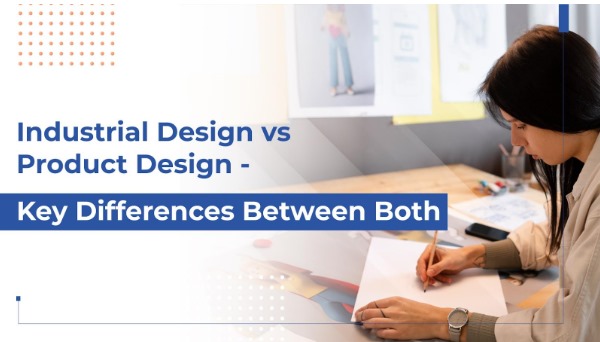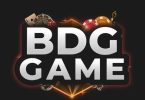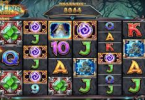If you are a creative student in Class 12 or you have just passed out of school and are looking for a future in design, product design and industrial design are two of the popular options that are likely to cross your mind. At first sight, they may sound very similar to each other, but in essence, they have completely different functions and are both capable of opening up different career paths.
This blog will explain the industrial design vs product design to help you decide which field corresponds to your creative aims better. In addition, we will explore the best design institutes in Mumbai to start your journey and career opportunities.
What is Product Design?
Product design is a cross-disciplinary sector that works on creating functional and user-centric consumer products. The main highlight is to understand the user problems and propose novel solutions that are functional and aesthetically attractive.
A product designer deals with all the aspects, from the product’s look, its uses, feel, and how it’s a part of people’s daily lives. These people are part of field research, brainstorming, prototype development, and trial runs on the product use. Along with collaboration with developers or engineers for the product to be released, it is also part of their job duties.
Skills You’ll Learn in Product Design:
- Design Thinking
- UX/UI Design
- 3D Modeling & Prototyping
- Human-Centered Design
- Digital Tools (Figma, Adobe XD, Fusion 360, Rhino)
The primary focus of product design colleges in Mumbai is to solve issues, and the reach of their application is often beyond just digital products, apps, wearables, and even service design.
What is Industrial Design?
Industrial design mainly deals with product manufacturability, user-friendliness, and ergonomics. It is the process of creating products that are not only beautiful but also practical, efficient, and safe for mass production.
Industrial designers collaborate with engineers and manufacturers to work out the technical part of a design that will be realized without losing its visual part and its functions.
Skills You’ll Learn in Industrial Design:
- Material Science
- CAD (Computer-Aided Design)
- Ergonomics and Human Factors
- Manufacturing Processes
- Technical Drawing
As an industrial designer, the outputs you typically think of are furniture, automobiles, home appliances, and tools.
Key Difference Between Product Design and Industrial Design
Let’s compare industrial design vs product design across various parameters:
| Aspect | Product Design | Industrial Design |
| Focus Area | User experience, aesthetics, and functionality | Mass production, ergonomics, and technical feasibility |
| End Product | Physical or digital products (e.g., gadgets, apps, wearables) | Mostly physical products (e.g., furniture, appliances, tools) |
| User Involvement | High—focus on user behavior, testing, and UX strategies | Moderate—focus on how users interact physically with a product |
| Tools Used | Figma, Sketch, Adobe Suite, Rhino, Fusion 360 | AutoCAD, SolidWorks, CATIA, 3DS Max |
| Design Approach | Iterative and human-centered | Production-centric and ergonomic |
| Course Curriculum | Includes digital design, UX/UI, prototyping, and design strategy | Includes manufacturing, technical drawing, materials, and mechanical processes |
| Career Outcomes | UX Designer, Product Designer, Design Strategist | Industrial Designer, Furniture Designer, Design Engineer |
The knowledge that industrial and product design are different can indeed help you choose the right course, which will be based on your strengths, such as digital experience, human behavior, or industrial functionality.
Career Opportunities in Product Design vs Industrial Design
Both fields offer dynamic and rewarding career paths, but there is a slight difference between industrial design and product design roles they lead.
Careers in Product Design:
- UX/UI Designer
- Interaction Designer
- Product Manager
- Design Researcher
- App or Web Designer
- Wearable Tech Designer
Product designers are in high demand in tech companies, startups, fintech firms, edtech, and D2C brands. Their focus is often on user interfaces, consumer electronics, and service design.
Careers in Industrial Design:
- Industrial Designer
- Furniture Designer
- Design Engineer
- Automobile Designer
- Packaging Designer
- Toy Designer
Automobiles, household items, and buildings are the main areas where industrial designers work. These professionals work effectively hand-in-hand with mechanical engineers and producers.
Salary Snapshot in India:
| Role | Average Entry-Level Salary (INR) |
| UX/UI Designer | ₹5–8 LPA |
| Product Designer | ₹6–10 LPA |
| Industrial Designer | ₹4–7 LPA |
| Furniture/Product Engineer | ₹3–6 LPA |
| Automotive Designer | ₹5–9 LPA |
No matter if you choose industrial or product design, you will have the opportunity to go for a variety of amazing jobs that depend on your interest and specialization.
Which One Should You Choose?
Still confused about industrial design vs product design? Here’s how you can decide:
Choose Product Design if:
- You are enthusiastic about digital tools, apps, and UI/UX.
- You are fascinated by the study of user behavior and enjoy dealing with actual life problems.
- You would like to work in various sectors that include tech, fashion, healthcare, and e-commerce.
- You are an advocate of creative freedom and are eager to construct models and interfaces.
Choose Industrial Design if:
- You’re very keen on the design of materials and hardware.
- You have a huge interest in engineering, production, and material science.
- Your target industries are the manufacturing, automotive, and construction sectors.
- You are very enthusiastic about how the items are formed and operate in a physical place.
Moreover, it is important to mention that there are designers who work in both areas. The selection of your specialization does not keep you from exploring other fields of creativity at some point in the future.
Product Design Education at One of the Top Design Institutes in Mumbai
Exploring design is not possible without choosing the right college, and you are ready for the leap. Among the top product design colleges, the B.Des in Product Design program offers:
- Design Thinking Curriculum with hands-on projects.
- State-of-the-Art Labs for prototyping and digital design.
- Global Exposure and international tie-ups.
- Career-Ready Portfolio by the time you graduate.
- Industry Mentorships from top designers and design firms.
- Strong placement record with startups and large enterprises.
The best design institutes in Mumbai not only offer a futuristic learning experience but also teaches the students to be the future product innovators.
Conclusion
Choosing between industrial design vs product design is more than just picking a course; it’s about finding your career direction. If you are more interested in studying user requirements, forming easy-to-use experiences, and interacting with both physical and digital software, then product design is your way. On the contrary, if you are a person who is keen on designing real-world products with the parameters of the way materials are assembled, and considering how they are used, industrial design is probably the solution for you.
Regardless of the way you choose, design remains a strong force today in a world where innovation is the driving force, and with the right training from a leading design institute in Mumbai like Universal AI, you will be well-suited to deal with this dynamically changing environment.








